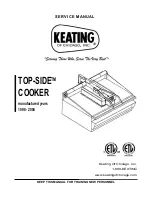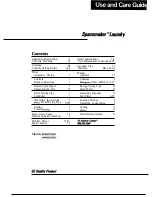
9
Step 1. Seasoning your food
To enhance flavors, you may wish to add marinade, spices,
herbs, butter or oil to your vacuum pouch prior to sealing.
Step 2. Vacuum sealing
Sous vide cooking requires food to be vacuum sealed inside
pouches to remove excess air and moisture in order to lock in
the food’s natural taste and nutrients. Vacuum sealing also helps
to relax the fibers in meat, poultry and seafood so that
marinades and seasonings are more readily absorbed for great-
er intensity in flavor.
Vacuum sealing can be easily achieved using zip-lock bags or
similar. Simply fill a sink or large vessel with water and place the
food and seasonings in a zip lock bag. Holding the top corners of
the bag, slowly immerse in the water and the air will be pushed
out. Once the bag is immersed up to the zipper, seal the bag.
Take care not to immerse the bag too far before sealing as this
may contaminate the food with water.
Commercial vacuum sealing machines are also available.
Step 3. Cooking your food
When the desired sous vide water temperature has been
reached, carefully place the pouches in the water. Ensure the
pouches are fully submerged, and that water can easily circulate
around the pouches for even cooking.
Step 4. Searing your food
After sous vide cooking, you may wish to finish off your dish by
searing it to enhance the food’s taste and appearance; this is
particularly helpful when cooking meat. Remove the meat from
the pouch and quickly sear it in a hot pan. This will enable the
caramelization of fats and proteins to bring out extra flavor.
Simple Steps to Sous Vide Cooking




































